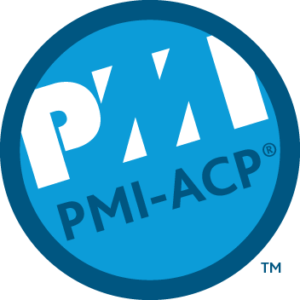Why
After working at tyro for many years, working with the Agile engineering team has given much exposure to Agile methodologies. Over time, I have noticed that Agile has been spreading to other areas of business beyond software engineering. Having a keen interest in projects and being able to deliver, I thought it was time I uplifted my Agile knowledge to be able to better understand the way that a large part of tyro operates (engineering is currently the largest team within tyro) and how Agile can be used to improve effectiveness in running non software engineering projects.
The prep
- The main content I studied was via Udemy. I can’t say I loved the process. Partly my fault for relying on the bookmark feature, which kind of helps for going back to those sections, but the reality of going through bookmarks of videos is that it’s very fragmented. In retrospect, I should have taken more written notes throughout. I also found my retention was perhaps not that great. Again, perhaps that could have been improved with written note taking as I went. However I think I may have learned more effectively face to face.
- Despite best efforts to get some face to face learning, I booked into two separate courses, but they were both cancelled for different reasons. Rather than delay things, I decided to push on and continue preparing alone. I would have preferred to have more group preparation however.
- I found Edward’s site very useful. I worked my way through many of the pages. One page in particular that was very helpful was the exam tips. Having done the exam now I can confirm that those tips are very valid.
- I paid for and did many of the practice questions from The PM Prepcast.
- I used other free testing resources as outlined at Edward’s site.
- I came across this post which includes a mind map of the exam content. I found the mind map helped me as a review of the content, making sure I didn’t have any gaps in what I’d studied.
- This is the first time I put the journey method memory technique to use. I used it to remember the 12 Agile principles. I found it to be a very good technique and I’ll be sure to continue using it as I continue working on improving my memory.
The exam itself
- I found that the process of elimination was very handy. The testing software enables you to right click to strike through multiple choice answers as you go. I used this extensively if the right answer was not immediately obvious.
- I thought the 3 hours would be plenty of time, but just to be safe, I wrote myself a little table like this one of questions left / time left to keep an eye on the pace I was working at (it turned out that I used every single minute of the 3 hours!):
| Questions remaining | Should have this much time left |
| 100 | 2:30 |
| 80 | 2:00 |
| 60 | 1:30 |
| 40 | 1:00 |
| 20 | 0:30 |
Knowledge
This section of brief notes does not intend to be a full summary of the certification content, but rather sections that I found worth noting as knowledge I wanted to retain for later reference or that stood out for some reason.
Agile vs Predictive Project Management

Backlog
A backlog should be:
D-etailed
E-mergent
E-stimated
P-rioritised
Tuckman’s model of group development
| Stage | Involvement from Team Leader/ Manager |
| Forming | Directing |
| Storming | Coaching |
| Norming | Supporting |
| Performing | Delegating |
Planning Hierarchy
Strategic->Release->Iteration->Daily
Levels of listening
In order of least to most advanced:
Internal->Focused->Global
Project Phases
- Envision
- Speculate
- Explore
- Adapt
- Close
Project Charter
There are many ways and versions, however they all should cover:
- Why
- Who
- What
- Where
- When
- How
Scrum
Pillars
- Transparency
- Inspection
- Adaption
Artefacts
- Product backlog
- Sprint backlog
- Increment of product
Roles
- Product manager
- Scrum master
- Development team
Ceremonies
- Sprint planning meeting
- Daily Scrum
- Sprint review meeting
- Sprint retrospective meeting
- Set the stage
- Gather data
- Generate insights
- What’s going well
- What could be improved
- What should we stop doing
- Decide what to do
- Close
